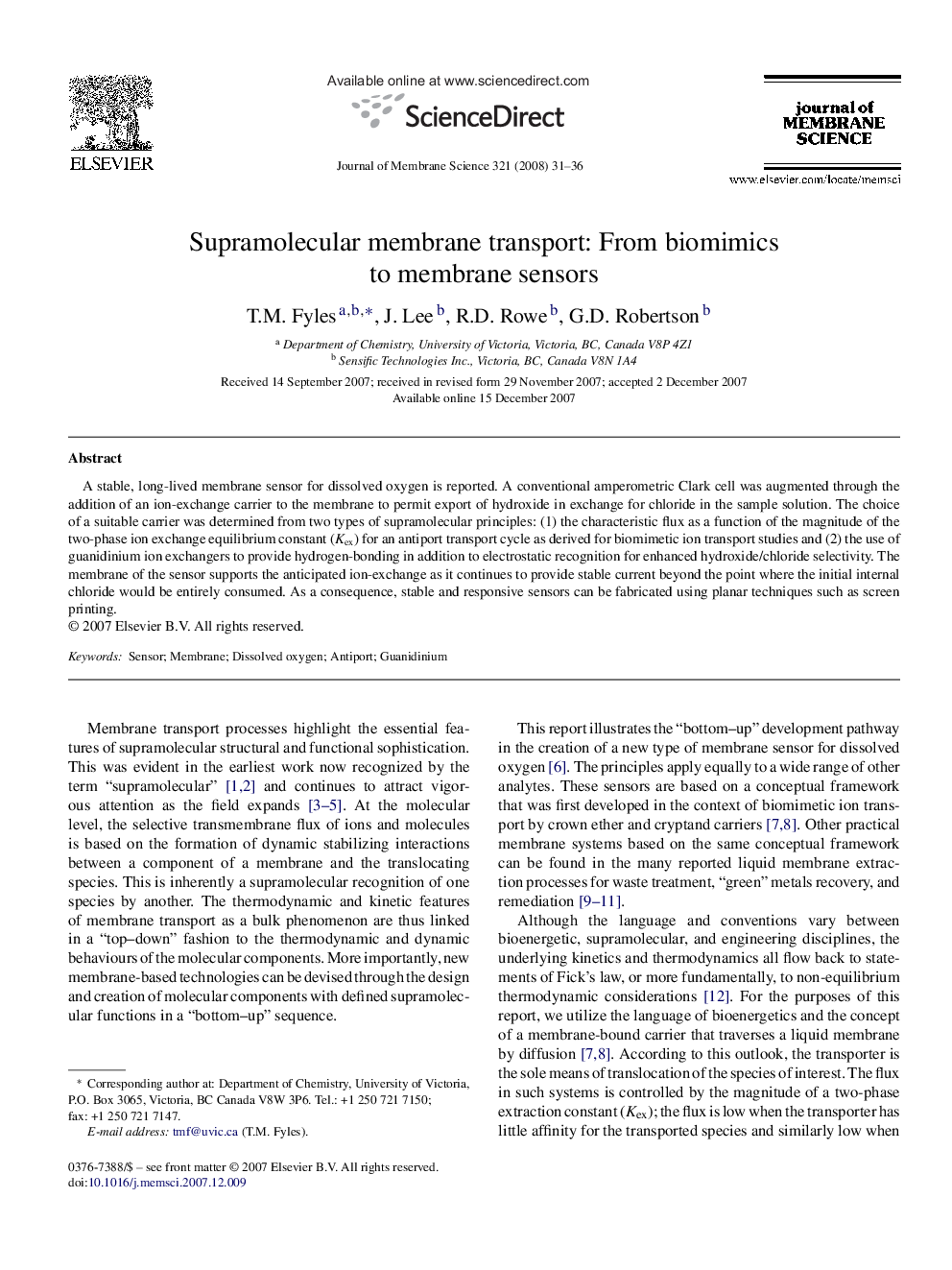| Article ID | Journal | Published Year | Pages | File Type |
|---|---|---|---|---|
| 637824 | Journal of Membrane Science | 2008 | 6 Pages |
Abstract
A stable, long-lived membrane sensor for dissolved oxygen is reported. A conventional amperometric Clark cell was augmented through the addition of an ion-exchange carrier to the membrane to permit export of hydroxide in exchange for chloride in the sample solution. The choice of a suitable carrier was determined from two types of supramolecular principles: (1) the characteristic flux as a function of the magnitude of the two-phase ion exchange equilibrium constant (Kex) for an antiport transport cycle as derived for biomimetic ion transport studies and (2) the use of guanidinium ion exchangers to provide hydrogen-bonding in addition to electrostatic recognition for enhanced hydroxide/chloride selectivity. The membrane of the sensor supports the anticipated ion-exchange as it continues to provide stable current beyond the point where the initial internal chloride would be entirely consumed. As a consequence, stable and responsive sensors can be fabricated using planar techniques such as screen printing.
Related Topics
Physical Sciences and Engineering
Chemical Engineering
Filtration and Separation
Authors
T.M. Fyles, J. Lee, R.D. Rowe, G.D. Robertson,
